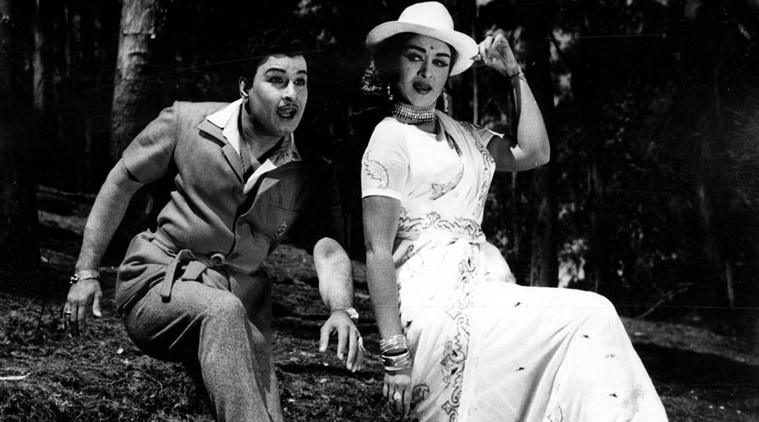“Kappa, nimageke kodabeku kappa (Royalty, why should we pay the royalty)”, the iconic dialogue by actor B Saroja Devi, playing freedom fighter Kittur Chennamma in the 1961 film by the same name, established her as one of the leading female stars of Kannada cinema. Only 23-year-old then, the young actor went on to become a legend in not just Kannada, but also Tamil, Telugu and Hindi films.
The doe-eyed beauty with over 200 films to her credit was one of the first Kannada actors to act in other language movies opposite biggest stars of that time. Saroja Devi was always up for learning new things, so much so that she opened her Instagram account at the age of 83 years (in 2021).
Following her death, who’s who of the film industry and political world took to social media to convey their condolences.
Taking to X, Prime Minister Narendra Modi called her an exemplary icon of Indian cinema and culture. “Her diverse performances left an indelible mark across generations.” Karnataka Chief Minister Siddaramaiah called her “Abhinaya Saraswati” and said her departure is a great loss to the Indian cinema. Superstars Rajinikanth, Kamal Haasan, Khushbu Sundar and others remembered her as a great artist who lived beyond the boundaries of “language and region”.
Born in a Vokkaliga family with her roots in Mandya district, Saroja Devi was the daughter of a police officer, Bhairappa. In those days, when women were not encouraged to act in movies, Bhairappa supported Saroja Devi to make her debut at the age of 17 opposite Dr Rajkumar, who went on to become another Kannada superstar, in ‘Mahakavi Kalidasa’ (1955). Her screen presence immediately captured the hearts of people and she started getting offers for Tamil films as well.
In 1958, Saroja Devi played the female lead in ‘Nadodi Mannan’ opposite Tamil cinema legend M G Ramachandran (MGR) and later went on to give more than 20 back to back Tamil hits.
Story continues below this ad
It was not just MGR, she was cast with several other reigning superstars of the time, including Sivaji Ganesan, Gemini Ganesan, Dr Rajkumar and N T Rama Rao (NTR).
She became the face of ‘Kittur Chennamma’ in 1961 with her powerful dialogues as the Queen of Kittur fighting the British against royalty collection from princely states. In those days, it is said, when children were asked who Kittur Rani Chennamma was, they would instantly reply “Saroja Devi”.
Hindi film, ‘Paigham’ (1959), starring Dilip Kumar and Vyjayanthimala in lead roles, was a blockbuster hit and Saroja Devi, despite her “bit role”, managed to impress the audience and directors with her crackling screen presence.
She went on to act in films like ‘Sasural’ (1961) with Rajendra Kumar, Beti Bete (1964) with Sunil Dutt and ‘Pyaar Kiya To Darna Kiya’ (1963) with Shammi Kapoor.
Story continues below this ad
She also acted in a few scenes with Raj Kapoor in ‘Nazrana’, but was later replaced by Vyjayanthimala reportedly over strict instructions of her mother, Rudramma, that she will not wear sleeveless dresses and swimwear.
Saroja Devi made her Telugu film debut in 1957 in ‘Panduranga Mahatyam’, in which she starred alongside NTR and Akkineni Nageswara Rao.
After her marriage to Sri Harsha, an engineer, Saroja Devi’s appearance in movies declined in the 1970s, though she continued to act in Kannada, Telugu and Tamil films.
Her acting career took a massive hit in 1986, after her husband fell ill while she was shooting a Kannada movie — ‘Ladies Hostel’. People known to her say she did not visit guests for nearly one year after the demise of her husband as she did not want to show her face without kumkuma (vermillion) on her forehead.
Story continues below this ad
She was the first vice-president of Kannada film artists’ association when Dr Rajkumar was its president.
Despite working with many superstars in south India and in Hindi movies, Saroja Devi kept a low profile. She was given several offers to join political parties, but she chose to stay away from politics. Then Karnataka Chief Minister Gundu Rao made her an offer to contest from Malleswaram Assembly constituency on a Congress ticket, but she declined.
Recognising her contribution to Indian cinema, the central government acknowledged her with Padma Shri (1969), Padma Bhushan (1992) and Lifetime Achievement Award during India’s 60th Independence Day celebrations in 2008.
She also won many state awards, including the prestigious Kalaimamani Lifetime Achievement award by the Tamil Nadu government in 2009.
Story continues below this ad
Umesh Banakar, president of the Kannada Film Producers Association, recalled Saroja Devi as an extremely disciplined and no-nonsense superstar. “Be it a superstar or a commoner, no one could meet her without an appointment. She always arrived on time for any event. Some superstars used to turn up late but she never stayed back,” he said.
A veteran photographer recalled that Saroja Devi was always conscious about her public appearance. During an interview at her residence, she asked him not to take photos from a low angle as it would expose her double chin.
In 2019, Saroja Devi appeared for the last time in the late Puneeth Raj Kumar-starrer ‘Natasaarvabhowma’, a horror film by actor-producer Rockline Venkatesh.


